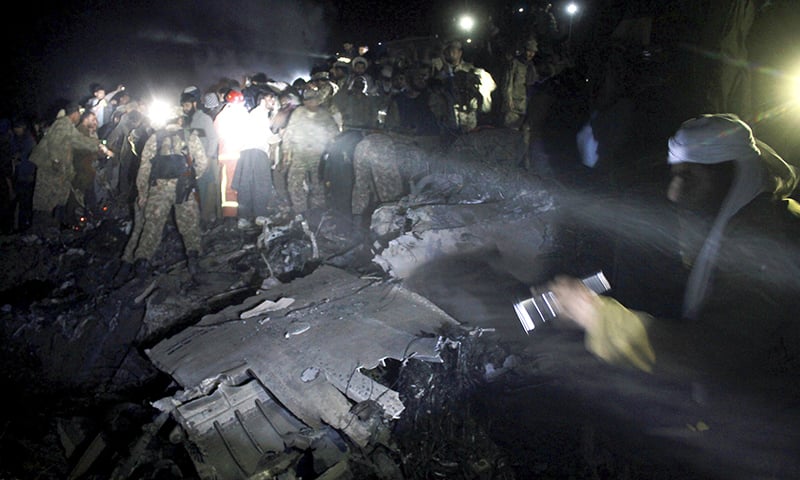According to the initial inquiry report, one of the engines of the crashed Pakistan International Airlines flight PK-661 malfunctioned mid-air and exploded, damaging a wing, leading to the accident that killed all 47 on board.
The Civil Aviation Authority inquiry said that the left engine malfunctioned, exploded and damaged a wing while flying smoothly at 13,375 feet, reported Dawn.
The plane had descended in an unsymmetrical manner after which it lost altitude in the few moments before it crashed.
The plane had started bumping at around 4.12 pm, which is when the pilot had reported the engine failure. It gradually lost 2,000 feet, entered free fall and lost another 1,800 feet in a millisecond, the paper said, citing the report.
The report says that the plane had been stable for a few milliseconds and the pilot gained some control. It glided for a few seconds before the free fall at around 4.13 PM but within minutes disappeared from the radar.
It suggests that the ATR 42-500 is one of the most recent versions of the aircraft. Its first delivery was made in 1995 while the plane in question was delivered to the PIA in 2007.
The plane had one instance of an engine failure in 2014. The engine was replaced and since then, it had been operating smoothly.
The ATR 42-500 has six-bladed propellers powered by PW127E engines rated at 2,400 shp (1,800kW) for improved high performance and increased cruise speed. Its engines are certified to be safe and strong in a variety of conditions. It had flown 18,740 hours before it crashed on Wednesday.
The weather conditions in the area were normal at 4.10 PM.
Temperature was recorded at 23 degrees Celsius, dew point at 10 degrees Celsius, humidity at 44pc, air pressure at 1,016 hPa and visibility at 16km. The wind’s direction was south-east and the speed 7.4km/h.
The pilot of the plane had extensive experience of flying in northern areas. Pilots do not shut down a problematic engine at once.
They bring the plane to a certain altitude and speed to make sure that the remaining engine can handle the load and aerodynamics. The pilot of PK-661 had been trying to do that but the failed engine had probably caught fire and damaged the wing, the report says.
“The PK-661 flight was damaged structurally. Since it fell freely, we can say with certainty that the aircraft was not intact and it had lost its shape and failed to glide,” the initial probe report says.
What seemingly happened, the inquiry report suggests, is that the pilot had reduced speed and dropped altitude after which the plane free fell due to structural damage. He had shut down the malfunctioned engine, which had exploded before that and damaged the wing.


















